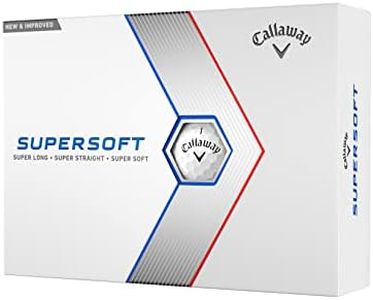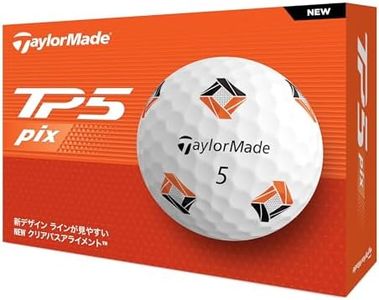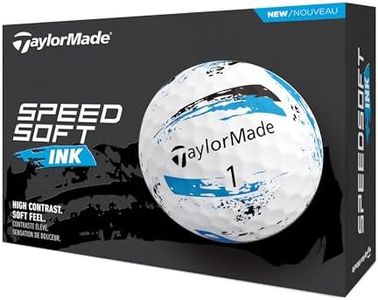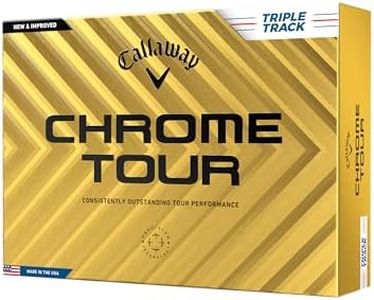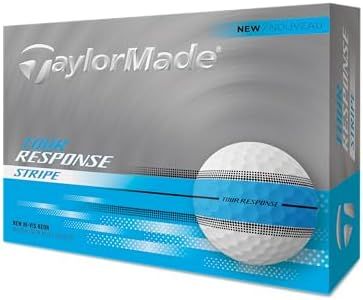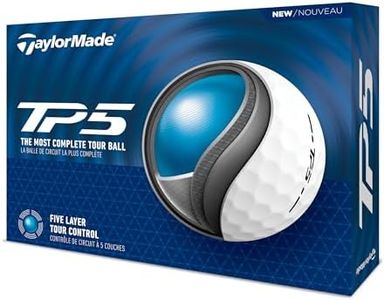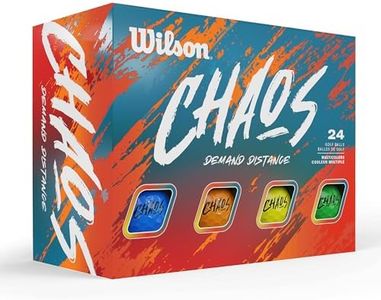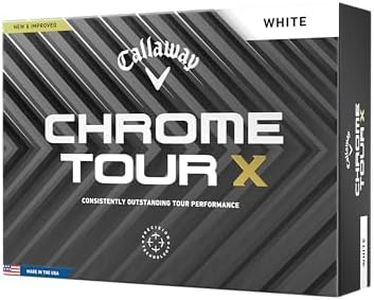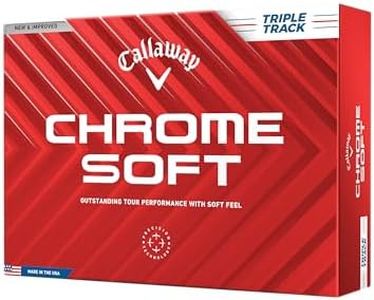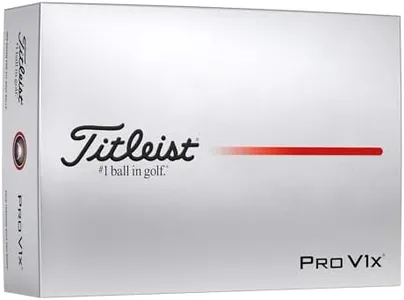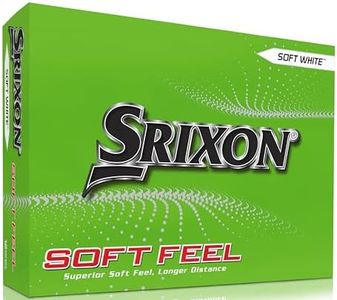We Use CookiesWe use cookies to enhance the security, performance,
functionality and for analytical and promotional activities. By continuing to browse this site you
are agreeing to our privacy policy
10 Best Golf Balls
From leading brands and best sellers available on the web.Buying Guide for the Best Golf Balls
Choosing the right golf ball can make a big difference in your game, whether you're just starting or an experienced golfer. To find the best fit for you, it's important to understand what goes into a golf ball and how each characteristic affects performance. The ideal golf ball for you should match your swing speed, provide the desired feel, and help you achieve your goals on the course—such as more distance, better control, or improved short-game performance.CompressionCompression refers to how much the golf ball deforms when struck. It's important because it impacts both distance and feel. Balls with lower compression are softer and compress more easily, making them suitable for players with slower swing speeds or those seeking a softer feel. Higher compression balls are firmer and require more swing speed to compress properly, usually favored by players with faster swings who want more control. To pick the right compression, consider your swing speed—slower swings generally benefit from low compression, while higher swing speeds match well with high compression balls.
Cover MaterialThe cover is the outer layer of the golf ball, and the main types are Surlyn (ionomer) and Urethane. The cover material affects durability, feel, and spin. Surlyn-covered balls are more durable and produce less spin, making them good for distance and beginners. Urethane covers offer more spin and a softer feel, which helps advanced players with better control, especially on chips and putts. Choose Surlyn if you want durability and distance or Urethane if you prioritize soft feel and spin around the greens.
Spin RateSpin rate is how much the ball rotates while in the air. Low-spin balls tend to fly straighter and roll farther when they land, helpful for those who want more distance or struggle with hooks and slices. High-spin balls stop faster on the greens, which helps with control for approach shots and short-game play. Mid-spin balls provide a balance between distance and control, making them a good all-around choice. Select low-spin if distance and minimizing sidespin is your goal, and high-spin if you need help stopping the ball on the green.
Number of PiecesGolf balls are made with varying numbers of layers or 'pieces,' typically ranging from two to five. Two-piece balls are simplest and offer the most distance and durability, great for beginners and recreational players. Three-piece and four-piece balls add extra layers that enhance spin and control, appealing to more advanced golfers. Generally, the more pieces, the greater the possibility for specialized performance, but also a higher demand on consistent swing skills. Pick two-piece if you value simplicity and distance, or shift to more layers as your skills and preferences develop.
FeelFeel is how the ball responds to impact, especially on short shots and putts. It's influenced by compression and cover material. Softer balls offer more feedback and are preferred by players who value touch around the greens. Firmer balls may feel 'harder' but often deliver more distance. To choose the right feel, consider what matters most to you—sensitivity for short shots or extra yards with each drive.
DurabilityDurability measures how well the ball stands up to repeated play without scuffs or cuts. More durable balls (usually Surlyn-covered) are ideal for casual players who use the same ball over several rounds or on courses with tough terrain. Softer, less durable balls (like those with Urethane covers) offer enhanced performance but may get damaged faster. Decide on durability based on how frequently you play and how much wear you're willing to tolerate for improved performance.
